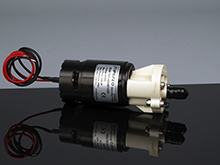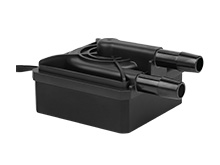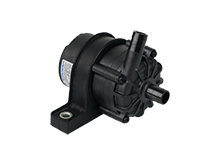How to Choose Automotive Coolant ?
2023-06-25
Automobile antifreeze, also known as "antifreeze", the full name is "automobile antifreeze coolant". Antifreeze is a coolant containing special additives, mainly used in liquid-cooled engine cooling systems. Antifreeze has excellent properties such as antifreeze in winter, anti-boiling in summer, anti-scale and anti-corrosion throughout the year.
When driving in the northern China, antifreeze must be used when the vehicle survives the winter, and antifreeze is divided into different levels, suitable for different temperature environments. Although the temperature in winter in the south is not as cold as in the north, there is always a period of time when the temperature is quite low, so it is best to use antifreeze to be on the safe side. Actually antifreeze is engine coolant, which is an indispensable heat dissipation medium for the normal operation of automobile engines.
1. Types of antifreeze
There are many types of automobile antifreeze, such as calcium chloride (CaCl2) in inorganic substances, methanol (CH3OH) in organic substances, ethanol (C2H5OH, common name alcohol), ethylene glycol (C2H4 (OH) 2, common name sweet alcohol), Glycerol (C3H5(OH)3, commonly known as glycerin), lubricating oil, and common sugar and honey in our daily life can be used as the mother liquid of coolant Ionized water, such as distilled water, unpolluted rainwater, snow water, etc., can become an antifreeze in the general sense after the total hardness component concentration of the water quality is between 0-30ppm).
Since methanol and ethanol are relatively volatile, they are not suitable for vehicles in northern China.
Currently, ethylene glycol is used in more than 95% of water-based antifreeze. Ethylene glycol is a colorless slightly viscous liquid with a boiling point of 197.4℃ and a freezing point of -11.5℃. It can be mixed with water in any proportion. Compared with tap water, the most notable feature of ethylene glycol is that it is antifreeze, while water cannot be antifreeze. Secondly, ethylene glycol has a high boiling point, low volatility, moderate viscosity and small change with temperature, and good thermal stability. Therefore, ethylene glycol-type antifreeze is an ideal coolant, and conventional antifreeze is generally produced with ethylene glycol as the main raw material.
2.Freezing coefficient of antifreeze
The conventional cooling levels of antifreeze are -25℃, -35℃ and -45℃,which are more common for us.
Automobile manufacturers usually specify the mixing ratio of antifreeze for different low-temperature antifreeze levels in the user manual, and also specify the type of antifreeze, which cannot be mixed.
Generally, when the ratio of antifreeze to water is 40:60, the boiling point of the coolant is 106℃, and the freezing point is -26℃. When it is 50:50, the boiling point of the coolant is 108℃, and the freezing point is -38℃. Normally it is required to prepare coolant at a temperature lower than the local minimum temperature of about 5℃.
3.How to choose antifreeze
There are two main points to measure the pros and cons of antifreeze:
The first is the antifreeze effect. The freezing point of water is 0℃. Generally, ordinary antifreeze can reach -40℃, while high-quality antifreeze should reach about -60℃. This is an important indicator for calibrating the quality of antifreeze.
The other is the boiling point of antifreeze. The boiling point of water is 100℃, and the antifreeze should be at least 108℃. That is to say, the lower the freezing point, the higher the boiling point, and the greater the temperature difference, the better the quality of the antifreeze.
In addition, it is necessary to pay attention to the anti-corrosion and anti-rust performance, and choose antifreeze with anti-rust, anti-corrosion and descaling capabilities as much as possible. Because some cheap antifreeze will use cheap calcium chloride, industrial salt and other inorganic salts, methanol, industrial alcohol and other alcohols to replace ethylene glycol, these alcohols volatilize quickly, and inorganic salts are easy to precipitate , and is highly corrosive to metals, causing great damage to automobile engines.
4. Matching of Coolant and water pump
In the cooling system of an automobile engine, the matching of the antifreeze and the water pump is related to the normal operation and reliability of the automobile engine.
For example, military-grade automobiles require that pump can start normally at extreme temperature of -41℃, so the freezing point of the antifreeze must be lower than -41℃, and the temperature resistance of the water pump used must match the freezing point of the antifreeze to ensure the smooth start of the car.
TOPSFLO has 18 years of experience in research and development of micro pump products, and has created mature low temperature resistance solutions for the automotive industry. The TA50 and TA60 series electric coolant pump of high-quality automotive electronic pumps produced by TOPSFLO will not cause the engine to fail even at an extremely low temperature of -50°C, which fully meets the heating needs and has been widely recognized by customers, such as Tesla, BAIC, Shaanxi Auto and so on. At the same time, we can provide customized solutions according to the actual situation of customers, and try our best to meet the needs of low-temperature starting of automobile engines.
The matching of water pump and antifreeze is very important. If you want to know more about TOPSFLO automotive electronic pump, please contact our sales engineer, we will do our best to serve you!










.jpg)

